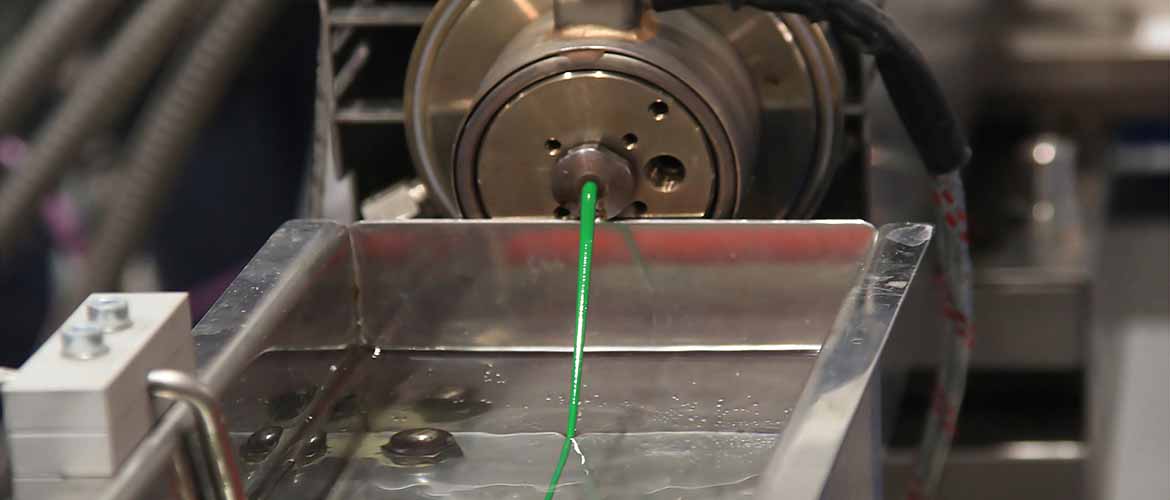Research Collaboration on Innovative materials for 3D Printing
Radical Materials Ltd. are material specialists based in Ebbw Vale. The company has developed a range of technical performance additives for use in industry with a variety of materials including polymers and coatings. In particular, they are market leaders in the manufacture and supply of antimicrobial additives for inclusion in a wide range of products using the brand name Steritouch®. More recently, they have developed additives to detect physical contaminates in food manufacturing (Scopic) and thermal conduction additives with applications in the automotive sector (Konduct).
The aim of the collaborative research with the ASTUTE 2020 team based at Cardiff University was to investigate whether formulations of polymer matrix composites, developed primarily for injection moulding by Radical Materials, possessed characteristics suitable for use in additive layer manufacturing (commonly known as 3D printing) using Fused Deposition Modelling (FDM). FDM is an extrusion technique by which molten material is printed in layers onto a build platform to form a 3D object following dimension data contained in a Computer Aided Design (CAD) file.
Challenge
Developing a wider range of new materials is a key strategic trend for companies wishing to take advantage of the rapidly expanding 3D printing market. FDM is one of the most commonly used forms of 3D printing and typically uses solid filaments of polymer which are melted in layers to form the desired component. Developing polymer-matrix composites with synergistic characteristics has the potential to produce FDM materials for a wide range of industrial applications. However, the proportions of the matrix polymer and reinforcement have to be balanced to produce the desired physical properties whilst remaining suitable for extrusion into filament and subsequent FDM.
Solution
Optimisation of Parameters for Extrusion & FDM
Granules of three different polymer matrix composites (A, B, and C) were analysed to see if the optimisation of extrusion parameters could enable the filament to be suitable for FDM production. The filament needs to be smooth and flexible with a consistent diameter.
The optimisation experiments resulted in materials A and C producing filament of sufficient quality to be used for FDM. Material B produced filament but the diameter was inconsistent despite different extrusion parameters being tested. This was probably due to the mass of the reinforcement in the composite.
Experiments with FDM parameters including temperature, layer height, build speed, and fill density were carried out to enable the test pieces of materials A & C to be printed. Samples of material A were successfully produced to allow antimicrobial testing to be carried out.
Samples of low and medium levels of reinforcement of material C were printed before thermal conductivity testing. However, the filament of material C with a high reinforcement level could not successfully produce printed samples. This was probably due to increased viscosity and/or abrasion of the printing nozzle.
Testing of Key Characteristics
Samples of material A were tested by Radical Materials for antimicrobial activity using method JIS Z 2801:2000 with MRSA and E.coli. All of the samples reduced the number of colony-forming units (CFU) by 99.991 percent after 24hrs at 35°C indicating the excellent antimicrobial ability of material A.
Printed samples of material C with two levels of reinforcement underwent thermal conductivity testing using a Netzsch LFA 447 NanoFlash Instrument with Pyroceram 9606 as a reference standard. This revealed that low reinforcement levels reduced conductive properties. However, a medium level of reinforcement increased thermal conductivity by approximately 20 percent. Infill density was found to be an important parameter as trapped air had an insulating effect, as opposed to conductive influence, on the composite samples being tested.
Impact
Overall, the results demonstrated that two of the three materials tested could be further developed into FDM products. The combination of Radical Materials’ in-depth knowledge of extrusion and formulation of polymer resins along with ASTUTE 2020’s technical expertise in polymers, additive manufacturing and materials analysis demonstrated the feasibility of production of polymer–matrix composite filaments for FDM, but highlighted that there are additional challenges to be met before these could be manufactured on a commercial scale. The antimicrobial material A was most successful and warrants further investigation.
During this research project, FDM printers using granules instead of filament have been launched and the company may wish to ascertain whether these will eventually dominate the market before investing in filament manufacture.
Radical Materials were awarded a SMART Cymru Innovation Award to develop their thermally conductive and Radio Frequency shielding material – ASTUTE 2020 has provided them with academic contacts from Cardiff University’s School of Engineering to assist with this work.




